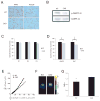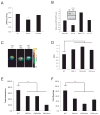PET imaging for attention deficit preclinical drug testing in neurofibromatosis-1 mice
- PMID: 21963652
- PMCID: PMC3202049
- DOI: 10.1016/j.expneurol.2011.09.005
PET imaging for attention deficit preclinical drug testing in neurofibromatosis-1 mice
Abstract
Attention system abnormalities represent a significant barrier to scholastic achievement in children with neurofibromatosis-1 (NF1). Using a novel mouse model of NF1-associated attention deficit (ADD), we demonstrate a presynaptic defect in striatal dopaminergic homeostasis and leverage this finding to apply [(11)C]-raclopride positron-emission tomography (PET) in the intact animal. While methylphenidate and l-Deprenyl correct both striatal dopamine levels on PET imaging and defective attention system function in Nf1 mutant mice, pharmacologic agents that target de-regulated cyclic AMP and RAS signaling in these mice do not. These studies establish a robust preclinical model to evaluate promising agents for NF1-associated ADD.
Copyright © 2011 Elsevier Inc. All rights reserved.
Figures



Similar articles
-
Reduced striatal dopamine underlies the attention system dysfunction in neurofibromatosis-1 mutant mice.Hum Mol Genet. 2010 Nov 15;19(22):4515-28. doi: 10.1093/hmg/ddq382. Epub 2010 Sep 7. Hum Mol Genet. 2010. PMID: 20826448 Free PMC article.
-
A positron emission tomography study of nigro-striatal dopaminergic mechanisms underlying attention: implications for ADHD and its treatment.Brain. 2013 Nov;136(Pt 11):3252-70. doi: 10.1093/brain/awt263. Brain. 2013. PMID: 24163364 Free PMC article. Clinical Trial.
-
Depressed dopamine activity in caudate and preliminary evidence of limbic involvement in adults with attention-deficit/hyperactivity disorder.Arch Gen Psychiatry. 2007 Aug;64(8):932-40. doi: 10.1001/archpsyc.64.8.932. Arch Gen Psychiatry. 2007. PMID: 17679638
-
Contribution of Clinical Neuroimaging to the Understanding of the Pharmacology of Methylphenidate.Trends Pharmacol Sci. 2017 Jul;38(7):608-620. doi: 10.1016/j.tips.2017.04.001. Epub 2017 Apr 24. Trends Pharmacol Sci. 2017. PMID: 28450072 Review.
-
The roles of dopamine and noradrenaline in the pathophysiology and treatment of attention-deficit/hyperactivity disorder.Biol Psychiatry. 2011 Jun 15;69(12):e145-57. doi: 10.1016/j.biopsych.2011.02.036. Epub 2011 May 6. Biol Psychiatry. 2011. PMID: 21550021 Review.
Cited by
-
Modeling cognitive dysfunction in neurofibromatosis-1.Trends Neurosci. 2013 Apr;36(4):237-47. doi: 10.1016/j.tins.2012.12.002. Epub 2013 Jan 8. Trends Neurosci. 2013. PMID: 23312374 Free PMC article. Review.
-
CTF meeting 2012: Translation of the basic understanding of the biology and genetics of NF1, NF2, and schwannomatosis toward the development of effective therapies.Am J Med Genet A. 2014 Mar;164A(3):563-78. doi: 10.1002/ajmg.a.36312. Epub 2014 Jan 17. Am J Med Genet A. 2014. PMID: 24443315 Free PMC article.
-
Neurofibromatosis type 1 and chronic neurological conditions in the United States: an administrative claims analysis.Genet Med. 2015 Jan;17(1):36-42. doi: 10.1038/gim.2014.70. Epub 2014 Jun 5. Genet Med. 2015. PMID: 24901347 Free PMC article.
-
Positron emission tomography imaging of dopamine D2 receptors using a highly selective radiolabeled D2 receptor partial agonist.Neuroimage. 2013 May 1;71:168-74. doi: 10.1016/j.neuroimage.2013.01.007. Epub 2013 Jan 17. Neuroimage. 2013. PMID: 23333701 Free PMC article.
-
Dopamine D3 receptor: A neglected participant in Parkinson Disease pathogenesis and treatment?Ageing Res Rev. 2020 Jan;57:100994. doi: 10.1016/j.arr.2019.100994. Epub 2019 Nov 22. Ageing Res Rev. 2020. PMID: 31765822 Free PMC article. Review.
References
-
- Bajenaru ML, Hernandez MR, Perry A, Zhu Y, Parada LF, Garbow JR, Gutmann DH. Optic nerve glioma in mice requires astrocyte Nf1 gene inactivation and Nf1 brain heterozygosity. Cancer Res. 2003;63:8573–8577. - PubMed
-
- Costa RM, Federov NB, Kogan JH, Murphy GG, Stern J, Ohno M, Kucherlapati R, Jacks T, Silva AJ. Mechanism for the learning deficits in a mouse model of neurofibromatosis type 1. Nature. 2002;415:526–530. - PubMed
-
- Dasgupta B, Yi Y, Chen DY, Weber JD, Gutmann DH. Proteomic analysis reveals hyperactivation of the mammalian target of rapamycin pathway in neurofibromatosis 1-associated human and mouse brain tumors. Cancer Res. 2005;65:2755–2760. - PubMed
Publication types
MeSH terms
Substances
Grants and funding
LinkOut - more resources
Full Text Sources
Medical
Molecular Biology Databases
Research Materials
Miscellaneous

